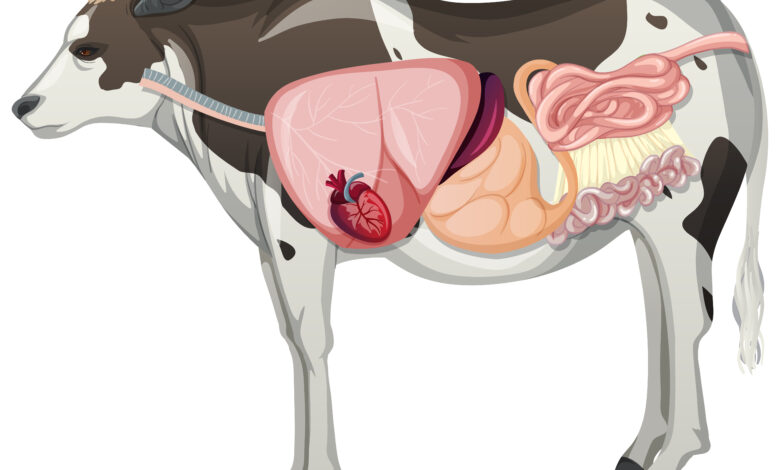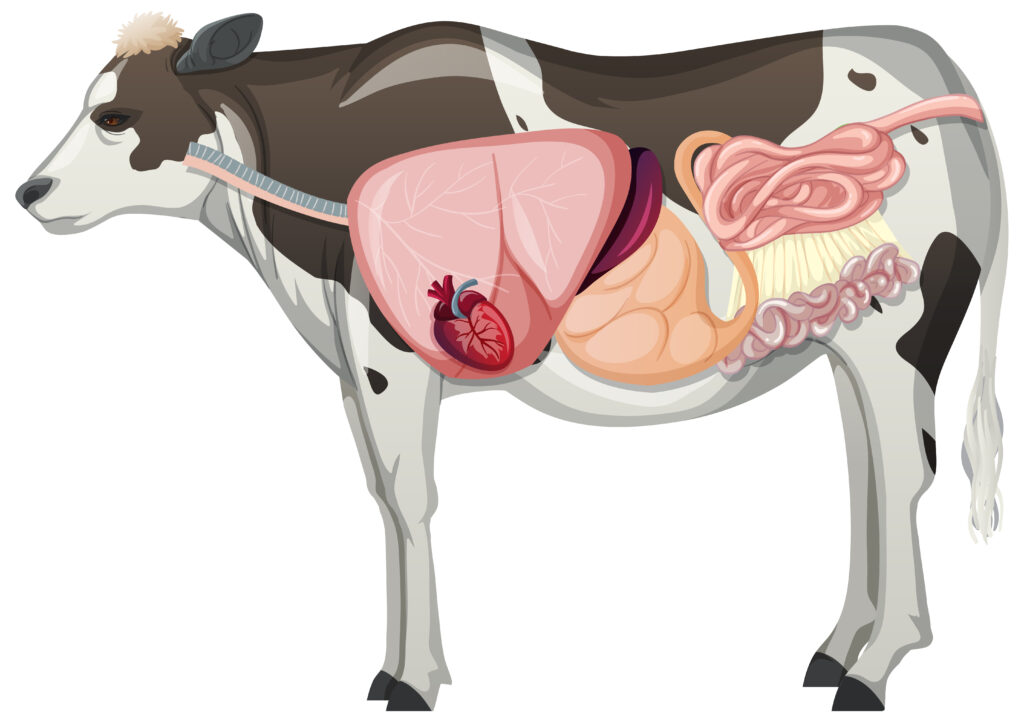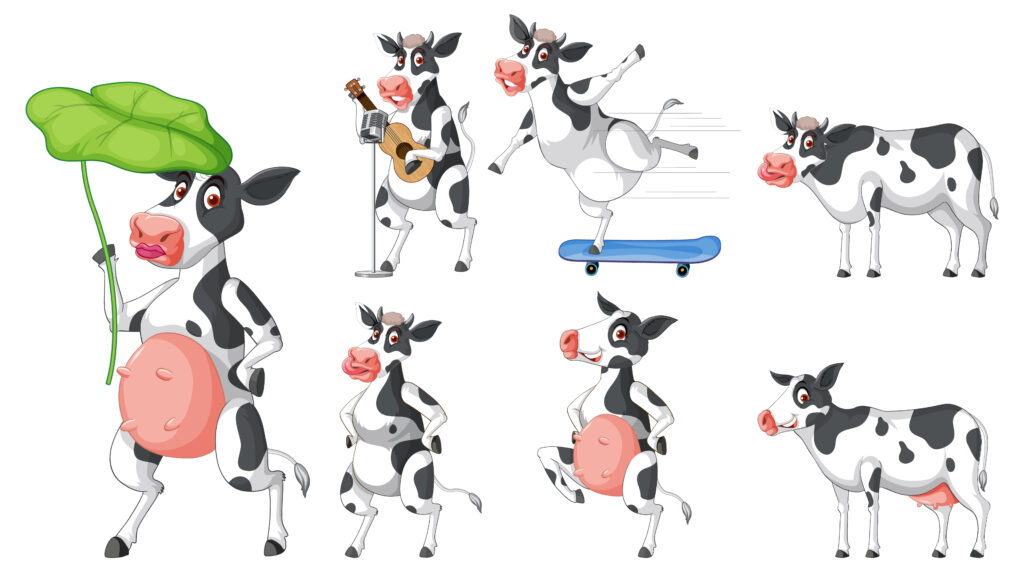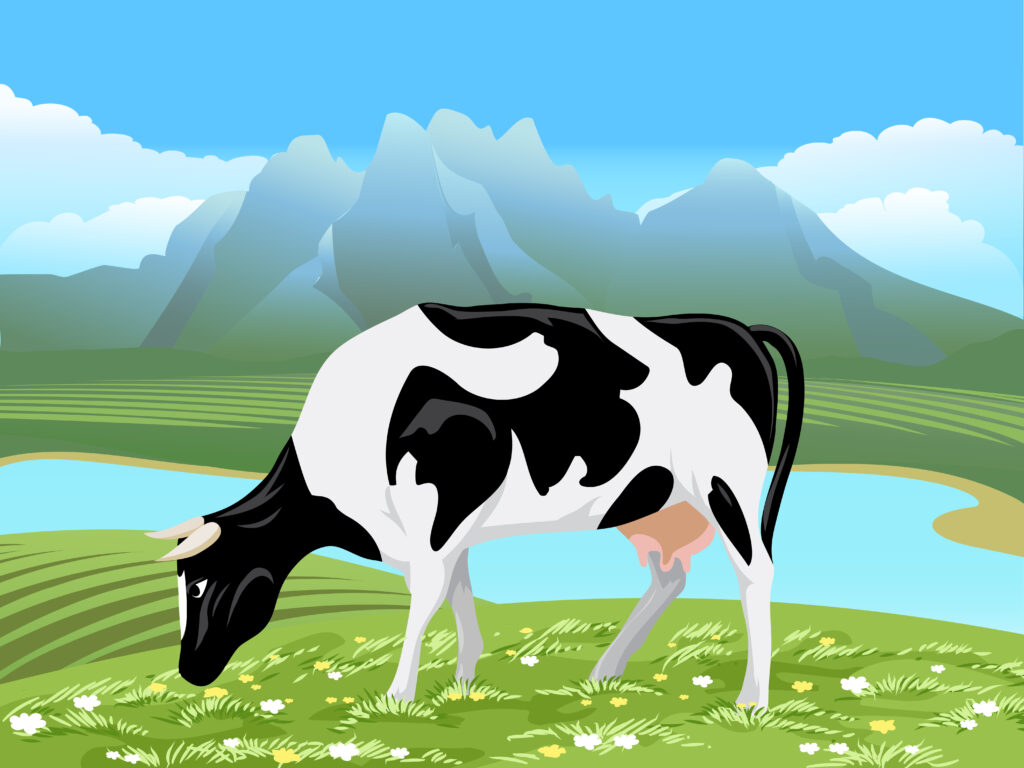How Many Stomachs Does a Cow Have | Genuine Information in 2023

Introduction
How Many Stomachs Does a Cow Have
Have you ever wondered how many stomachs a cow has and why they need so many? It might seem like an odd question, but understanding the unique digestive system of these gentle giants can be both fascinating and enlightening. In this article, we’ll dive into the world of cow stomachs, breaking down their anatomy, how they work together, and dispelling common myths. So, grab your virtual cowboy hat, and let’s mosey on into the world of bovine digestion!
Table of Contents
The Anatomy of a Cow’s Stomach

Four Stomachs, One Goal
Cows, like other ruminants, possess a complex digestive system comprised of four stomach compartments. The rumen, reticulum, omasum, and abomasum are these compartments. Each of these stomachs plays a crucial role in breaking down the tough plant material cows consume.
Rumen: The First Compartment
The rumen is the largest of the four stomachs and serves as a fermentation vat. Here, microorganisms work diligently to break down cellulose, a tough plant fiber that would be indigestible for most animals.
The Important Role of Reticulum
The reticulum acts as a sort of filter, capturing larger foreign objects that the cow might accidentally ingest while grazing. This helps prevent any harm to the digestive system.
The Omasum: Nature’s Filter
The omasum further refines the partially digested food, squeezing out excess water and absorbing important nutrients. Think of it as nature’s version of a sponge.
The Abomasum: True Digestion Begins
Finally, the abomasum is similar to a human stomach, where the actual digestion of food begins. Here, gastric juices break down proteins, and the cow can start absorbing essential nutrients.
How Do Cow Stomachs Work Together?
The Process of Fermentation
The key to a cow’s digestive prowess lies in its ability to ferment food in the rumen. This process softens the tough plant material, making it easier to digest. It’s like a slow-cooking pot for cows!
Nutrient Absorption in the Small Intestine
After the initial stages in the stomachs, the digested nutrients move on to the small intestine, where absorption takes place. This is where the cow gets the energy it needs to roam the pasture.

Do Other Animals Have Multiple Stomachs?
While cows are the most well-known animals with multiple stomachs, they’re not alone in this digestive strategy.
Specialized Digestive Systems
Other ruminants like sheep and goats also have four-chambered stomachs. However, different animals have unique adaptations to their digestive systems based on their diets.
The Benefits of Having Multiple Stomachs
Having multiple stomachs offers distinct advantages for herbivorous animals like cows. It allows them to extract maximum nutrients from fibrous plant material, making their diet incredibly efficient.
Common Myths About Cow Stomachs
Myth #1: Cows Chew Their Cud Because They’re Bored
Contrary to popular belief, cows chew their cud as part of their digestive process, not because they’re bored. This regurgitation and rechewing help break down food further.
Myth #2: Cow Stomachs Can Digest Anything
While cow stomachs are impressive, they can’t digest everything. They have specific diets, and their stomachs are adapted to process plant material, not meat or other animal products.
Myth #3: All Stomachs Are the Same
Not all animal stomachs are created equal. Cow stomachs are unique, with specialized compartments that serve distinct functions in the digestion process.

Conclusion of How Many Stomachs Does a Cow Have
So, there you have it – the secret behind a cow’s multiple stomachs. These remarkable digestive organs enable cows to thrive on a diet of fibrous plants. The next time you see a cow peacefully grazing in the field, you’ll have a deeper appreciation for their incredible digestive system.
If you have any Question about that, VISIT & do not Hesitate Just CONTACT US




Thanks for sharing. I read many of your blog posts, cool, your blog is very good.
I’m always excited to see what’s next. What Is Cryptocurrency Crypto
It’s a pity you don’t have a donate button! I’d certainly donate to this fantastic blog! I guess for now i’ll settle for bookmarking and adding your RSS feed to my Google account. I look forward to brand new updates and will talk about this site with my Facebook group. Talk soon!
Hey! Do you know if they make any plugins to assist with Search Engine Optimization? I’m trying to get my website to rank for some targeted keywords but
I’m not seeing very good gains. If you know of any please
share. Cheers! I saw similar art here: Eco wool
whoah this weblog is wonderful i love reading your articles. Keep up the great work! You already know, lots of individuals are searching round for this information, you can aid them greatly.
모두 함께 건강한 게임 문화를 만들어가요 !! 방문하다 먹튀레이더
Good
I used to be more than happy to search out this internet-site.I needed to thanks for your time for this wonderful read!! I definitely having fun with every little bit of it and I have you bookmarked to take a look at new stuff you blog post.
Keep up the superb piece of work, I read few articles on this internet site and I conceive that your web site is very interesting and contains lots of fantastic information.
Thanks for sharing your wisdom with us. Tech News
The Top MBBS Colleges in Punjab are trusted for delivering exceptional medical training and research opportunities.
Explore financial clarity with MBBS Fees Structure in Manipur.
Invite your friends and enjoy bonuses with the Raja Luck Invite Code.
Some truly tremendous work on behalf of the owner of this site, absolutely great written content.
Hi there! Do you know if they make any plugins to assist with Search Engine
Optimization? I’m trying to get my blog to rank for some targeted
keywords but I’m not seeing very good success.
If you know of any please share. Thank you! I saw similar blog here:
COD
Merely wanna state that this is invaluable, Thanks for taking your time to write this.
I am really inspired with your writing skills as smartly as with the layout in your blog. Is this a paid subject or did you customize it your self? Anyway keep up the excellent quality writing, it’s rare to look a nice weblog like this one today. I like najmussaqib.info ! My is: Instagram Auto follow
I’m really inspired along with your writing talents and also with the layout to your blog. Is this a paid subject matter or did you customize it your self? Either way keep up the excellent high quality writing, it’s uncommon to see a nice blog like this one today. I like najmussaqib.info ! Mine is: Stan Store alternatives